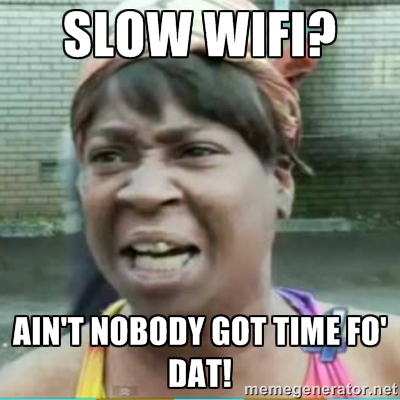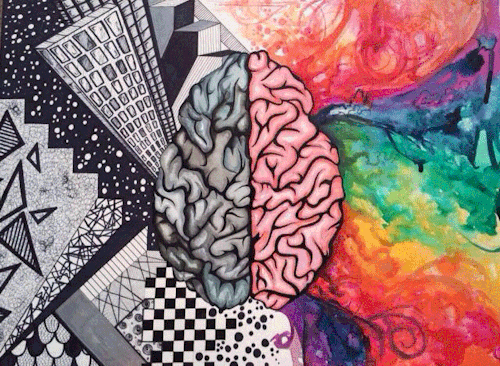In this weeks class, we explored the topic of Legacy Videos with a focus on the famous Nam June Paik’s interesting work he has produced. As I was researching through his practices produced, it came to my attention how unique and abstract his work is, something that really stands out and is quite significantly different to what you would see broadcasted in today’s media.
Who is the practitioner (what is their name?) and when were they practicing?
The practitioners name I focused my research around for this week is Nam June Paik, a Korean American video artist. Paik was featured as one of The Century’s 25 Most Influential artists along with Pablo Picasso by ART News, an influential U.S. He is still, the most internationally famous Korean-born artist. He starting practicing as early as the 1960’s, where in1964 in New York he first began combining his visual and musical interests together.

With video you are examining when was it produced (date)?
The video was published in 1980, titled ‘Lace Placid’. Lake Placid‘ 80 is a metonymy for the Winter Olympic Games, created by Nam June Paik, when commissioned by the National Fine Arts Committee for the 13th Games, in Lake Placid, in 1980.
How was the video authored?`
It was authored with the use of an expensive camera that is solely used for videography and would have most likely involved the use of tape recording rather than an SD card and a hard drive that we would use in today’s society. The video would need to be taken to a special area that had the software and equipment to edit the video, which shows the difference between the production of the legacy images and modern day production of images.
Lake Placid’ 80 is a metonymy for the Winter Olympic Games, created by Nam June Paik, when commissioned by the National Fine Arts Committee for the 13th Games, in Lake Placid, in 1980. Sound and image unite sport and the festivities. Both the subject and the medium are endowed with the international dimension of the context, and Nam June Paik only goes beyond this with music, which he sees as a non-verbal communication between audiences of different ages cultures and countries.
How was the video distributed?
The video was presented by Paik producing this exuberant, high-speed collage as a commission for the National Fine Arts Committee of the 1980 Olympic Winter Games and was presented on Television. In a fractured explosion of densely layered movement and action, images of Olympic sports events are mixed with Paik’s recurring visual and audio motifs.
For this weeks blog post I decided to focus on the well known and inspirational photograph captured by photographer Dorothea Lange. Her first real taste of documentary photography came in the 1920’s when she traveled around the Southwest, mostly photographing Native Americans. With the onslaught of the Great Depression in the 1930s, she trained her camera on what she started to see in her own San Francisco neighborhoods: labor strikes and breadlines. This body of work included Lange’s most well-known portrait, ‘Migrant Mother’, an iconic image from this period that gently and beautifully captured the hardship and pain of what so many Americans were experiencing.
Lange’s access to the inner lives of these struggling Americans was the result of patience and careful consideration of the people she photographed. “Her method of work,” was often to just saunter up to the people and look around, and then when she saw something that she wanted to photograph, to quietly take her camera, look at it, and if she saw that they objected, why, she would close it up and not take a photograph, or perhaps she would wait until… they were used to her.”
“I saw and approached the hungry and desperate mother, as if drawn by a magnet. I made five exposures, working closer and closer from the same direction. I did not ask her name or her history. She told me her age, that she was thirty-two. She said that they had been living on frozen vegetables from the surrounding fields, and birds that the children killed. She had just sold the tires from her car to buy food. There she sat in that lean- to tent with her children huddled around her, and seemed to know that my pictures might help her, and so she helped me. There was a sort of equality about it.” -Dorothea Lange

the Image link: http://100photos.time.com/photos/dorothea-lange-migrant-mother
Who is the practitioner (what is their name?) and when were they practicing?
The practitioner was known as Dorothea Lange. She took this photograph in 1936, while employed by the U.S. government’s Farm Security Administration (FSA) program, formed during the Great Depression to raise awareness of and provide aid to impoverished farmers. In Nipomo, California. She was practising for about 10 years.
With the photo you are examining when was it produced (date)?
This photograph was produced back in the year of 1936 in either February or March in Nipomo, California.
How was the photo authored?
The photo was taken with The Graflex Super D. A very remarkable camera loved by professional photographers back in that era. The Super D was the successor of the Graflex Series D. The photograph captured was in Black and White and obviously not in full HD quality and the original negatives are 4×5″ film.
How was the photo distributed:
Even though images were commissioned by the government they were impounded and not shown to the public even after the war ended. Lange’s photograph was kept a secret for almost 50 years and visually showed how the United States government detained people without charging them of any crime based on their Japanese ethnicity, even if most were Americans. Lange’s images sat in the National Archives until 2006. These images, even in today’s society, remain of critical importance. The work now is showcased in the Library of Congress.
Name: Bianca Barichello, S3540013
I declare that in submitting all work for this assessment I have read, understood and agree to the content and expectations of the assessment declaration – https://www.rmit.edu.au/students/support-and-facilities/student-support/equitable-learning-services
Blog Reflections:
Blog Post #1- Blogging
Blog Post #2- Affordances
Blog Post #3- Network Literacy
Blog Post #4- Social Media
Selected Text 1 – Blogging:
Miles, A 2006, ‘Blogs in Media Education: A Beginning’, Australian Screen Ed, 43, pp. 66-69.
This article explores the crucial importance for students studying media and teachers to begin to integrate blogging into education systems. He explains why he thinks blogging is beneficial as it allows the student to learn the affordances of blogs compared to more ‘traditional’ ways of expressing their writing skills through diaries and notebooks. Suggesting, that blogs are a useful platform that offers many benefits to students in the way in which content is taught and interpreted, he claims that blogs are in fact a form of literacy. They demonstrate an effective way to communicate thoughts and serve as a useful tool in reflection. It allows an individual to be more creative with in their writing. While also providing the ability for students to actively interact alongside peers, bringing them together to work in a public domain.
In Miles articles he raises an interesting point regarding our individual identity and how it’s framed and shaped by our online persona and how we control it. We seek to consistently update our Social Media presence on a regular basis to keep our viewers interested. With this being said Adrian’s discussion on that topic really set the concept surrounding my Blog 1 post, as it really made me think about my online persona and how what I produce reflects my personality and how I want my viewers to perceive me as an individual. Shown through my carefully selected visual content I chose to share to the world. I do it in a certain way as I know people are viewing the content, as discussed by Miles. When we are sharing and uploading an Instagram photo we are producing visual content we think will interest and engage our audience, just like we do when we produce a blog we might write about certain content in a particular way because our audiences can relate. In reference to the research question How do the affordances of Instagram affect the way photos and videos are authored, published and distributed in the network?”, the concept of writing in a particular style so our viewers will be able to understand and interpret can be easily compared to how we construct our Instagram caption. Even though captions are quite short and concise, we all know there is a lot of time that is spent carefully authoring it to ensure it’s going to be consumed and perhaps relatable to the people viewing the content. In terms of the prompt we are focusing on, as Miles discussed; uploading and engaging in applications on Instagram can be easily compared to blogging as it allows collaboration with peers and the sharing of content within a community.
Adrian’s view points are valid to some degree because we have so many opportunities to explore through blogging; such as this way of writing being useful for teaching as it supports the integration of working collaboratively and sharing information with peers. Blogging provides many avenues and relevant functions which are useful in enhancing content. However, there are some limitations that did appear to stand out to me, as being not so relevant to our research efforts. That is, In today’s society there has been an increasing demand for visual content as it engages and captures the attention of the audience. As well as it being faster and easier for readers to process. This is something that Miles fails to acknowledge as an important and significant association to a blog post. This article being published quite some time ago in 2016, where since that time period visual content has definitely developed and advanced. Especially with the rise and expansion of Instagram visual content has certainly grown in importance. Another limitation is that the author of this article being teacher is more so directed other teachers, informing them of the importance and value blogging can provide with in the class room. With the strong focus and push on teaching and providing teachers strategies on how they integrate this platform with in their teaching skills, hinders the useful-fulness of this text to our research.
Selected text 2- Affordances:
Norman, D 1998, “The design of everyday things” Basic Book, New York (Sections: Preface vii-xv; Chapter one 1-13; Chapter 4 (constraints) 81-87; (computers) 177-186).
Don Norman popularised the concept of affordances which impact and influence our daily lives. Affordances represent a first step towards the development of prescriptive methods and help preventing a designer from imposing experiences to users. Norman explores the framework for describing product experience, by analysing the working of interface designs. He informs readers how frustrating every day objects can be if they aren’t designed effectively for the user. He emphasises to his audience that a well constructed design relies on all three vital aspects; affordances, constrains and conventions. Not only does it make it easier for the user to perceive and interpret controls to allow an individual to perform certain actions, it also leads to discovery of the desired actions and avoids undesired ones. Furthermore, Norman explores how we use affordances and constraints to learn how things operate. Affordances suggest the range of possibilities, and constraints limit the alternatives possible.
Norman claims that conventions are targets that are included within interface designs, allowing us to automatically apply perceived affordance to. When constructing my blog post for this topic, after processing Norman’s discussions and applying it to my every day life, I thought about Instagram where this is clearly demonstrated to us. These include feature applications on the app in which we click into with one simple touch, to provide us with the option of uploading and editing images, even allowing us to use filters if we desire. Instagram also affords extra functions that enhance the users experience that little bit more, such as being able to comment and like other users content as a means of interacting. Without the affordances there would be no such thing as interaction between a website and user, or a social media platform and user.
Overall, I think this reading was highly insightful and informative in regards to our research topic, it was very relevant and highlighted the basis for how Instagram was designed and why. Furthermore, having a good understanding of the affordances, shows the influence these constrains and conventions have on the invention of objects and design. Norman’s article provides readers with a logical explanation to support his discussions of the importance of understanding the three necessary interface design when it come to designing an object, In order to produce a well constructed product. His discussions regarding his previous work experience in the field even including working with apple, provides a sense of validation and proves that he is very familiar with the interface designs and the affordances associated.
Fundamentally, Norman does a good job of informing readers of the integral and crucial part in determining how a web user can sufficiently operate an application they are using with out any confusion being caused. These set the standards of how today’s social media and website structures are the way they are and how they have been utilised to provide the users with a successful easy to use navigation system. Simple processes which we don’t even have to think twice about such as uploading images to our account is influenced on Instagram’s layout and page design. It is quite an interesting concept that small functions created by a skilful designer can result in such an enhanced user experience. When I was writing my blog about affordances it made me think how these effect my daily life an actions I’m under taking. I related the three designs to Instagram: such as an affordance might be that filters can be added to enhance the quality of our images. A physical constraint might be that video content we upload can’t exceed a 60 second time frame. A cultural constraint might be that given the ways text has to be formatted to fit the page.
Selected text 3: Network Literacy
Miles, Adrian. Soft Cinematic Hypertext (RMIT University, 2012. (Network Literacy: The New Path to Knowledge 201-208)
This reading outlines clearly what print literacy is and uses this in assisting to explain network literacy. In today’s society anyone who has had the opportunity to have an education is print literate. Miles goes on to discuss that in modern society it could be generally assumed that each individual would be equally literate in terms of being able to operate new advanced online networks. However, this is not the case as we don’t have the same deep understanding of the protocols and logic like we do of print. Miles reinforces the importance of understanding the dynamics of network literacy, as it is essential to keep updated with existing technology as it’s so rapidly evolving. If you don’t have any knowledge in this field you will be left behind, as all information is being shared and re located online.
Miles defines network literacy as being able to have the capabilities to participate with in networks which are collaborated and incorporate information of the internet. He makes it clear to his readers that network literacy and print differ quite significantly, as network literacy enable collaboration and uploading to a public stream, where feedback and options are exchanged. It can also be mentioned that for our older generations this can prove to be more difficult as they haven’t grown up in generations where technology was a big part of their lives, and now with technology being a significant aspect of our lives this can be difficult for them to grasp an understanding. An important part of Miles reading was his reinforcement that network literacy has many uses and not just for our own personal consumption but also allows for individual contribution. This impacts how Instagram users post their content and they deem is appropriate to be viewed by the wider pubic. However, with Instagram offering many affordances for their viewers there is an option provided for users to have a private account, and can control who views their account content.
Miles explorations assisted me in discussing my weeks 3 blog on networks. He allowed me to reflect on the fact that even though network literacy has many benefits it can also pose as an invasion of privacy, as so much of our personal details are exposed on the world wide web for anyone to view. These days we are so prone to providing companies with our personal details, it comes naturally without even bothering to think about the consequences associated with it. Finally, Miles sharing real life stories of how he integrates network literacy into his daily life inspires readers to also engage and get involved in this network literacy. By Miles providing several examples of consumption he has engaged in informs readers that anything is possible and it’s never too late to expand your knowledge. In addition, indicating his strong use of network literacy and all the positive associations, further provides validation of his articles discussions.
A new advanced generation of Web 3.0 is supported by smarter websites, powerful mobile devices and incredibly fast speed internet. Providing Individuals with innovative ways to access data and new tactics for businesses, that are trying to reach out to certain consumers. The new Web is making peoples lives more convenient by giving the users exactly what they are looking for and predicting what the user wants to see next… scary right predicting our future actions? Just like when I’m browsing online every site I go on, a little side bar pops up to remind me I haven’t made that purchase yet of the dress I have had my eyes on for some time, trying to entice me to re-visit the page again and complete that unfinished purchase. This week we focused on the reading ‘Understanding New Media’ which is expected to lead to as understanding of changes and transformations in social processes, norms, ideas and practices. (Siapera, 2013).

Let’s take a moment to see how far we have really come in the worldwide web and the delevopment of collaboration and engagement:
Web 1.0: It is the “readable” phrase of the World Wide Web with flat data. In Web 1.0, there is very limited engagement between sites and users of the web. Web 1.0 is purely an information portal where users passively receive information without any opportunity to post reviews, comments, and provide any sort of feedback, how crazy right? Imagine in today’s society how different it would be not having the ability to interact personally on sites and provide your opinions and feedback!
Web 2.0: It is the “writable” phrase of the World Wide Web with interactive data. Unlike Web 1.0, Web 2.0 facilitates interaction between web users and sites, so it allows users to interact collaboration with one another. Web 2.0 encourages participation, collaboration, and information exchanging and sharing. Examples of Web 2.0 applications are Youtube,Instagram, Flickr, Facebook many other platforms.
Web 3.0: It is the “executable” phrase of Word Wide Web with high-power applications, interactive functions, and “machine-to-machine” interaction. Web 3.0 is a semantic web which refers to the future. In Web 3.0, computers have the ability to extract and understand information like humans and intelligently generate and distribute suitable content customised to the users needs and desires.

During our class alongside my group we engaged in discussions regarding the breakthroughs of Instagram and how businesses utilise our data to assist in personalisation and customisation at a different level. As I discussed above regarding certain products I have searched on google appearing on different websites, similar situation occurs when I’m scrolling through my Instagram newsfeed and the explore page. I sometimes find the brand of the product appearing as a sponsored advertisement, sometimes its not the exact item however its connected to other products which I would also take an interest in. When you really think about it, it’s scary to contemplate how much of our personal information is being given to companies, but as we do it so frequently, it doesn’t seem like a big deal for us! Roughly we can see Instagram is well and truly around Web 2.5ishhh Instagram is well and truly on the way to the four drivers of change- which include, globalisation, digitalisation, personalisation, and mobilisation. It achieves the infamous sweet spot of mapping where we users feel acknowledged and are given total control. As well as improving the features accommodate more for the users and listen to what it is they really want.

Siapera, Eugene. Understanding New Media. SAGE Publications, London 2013.(pp.1-16)
Thinking about the invention of the World Wide Web and how far it has advanced and developed over time is quite simply overwhelming and amazing!!! We require any answers, in a simple click of a button you’ll have it, everything you need right there! What would we do without google? Don’t have an answer, it’s okay google is always there to lend you a helping hand!
Living in the society we do in this day and age, we have such high expectations of our technology. On a rare occasion where the internet wifi might be slightly delayed or slower than usual, we get so frustrated and angry, like what a major inconvenience right?? Prime example is my 13 year old Brother, who alike many any other teenage boys has a crazy obsession with the game which has taken over the nation: the famous ‘Fortnite’ video game. One night he was obviously in the middle of a very intense game and was screaming, from all the way downstairs, his piercing voice travelled through the whole the house “THE INTERNET IS LAGGGGGGINNNGG, EVERYONE GET OFF THE INTERNET I’M ABOUT TO DIE”, he was so mad. Without wasting any time he picked up his whole game set up including his huge monitor and relocated into our study, just so he could get a better Wifi connection. It was like it was the end of the world for him…. just an insight into first world problems right??

In this weeks class we focused on the web 2.0 as well as network literacy. ‘Network literacy is quite simply being able to participate as a peer within the emerging knowledge networks that are now the product of the Internet, and to have as ‘deep’ an understanding of the logics or protocols of these networks as we do of print.’
‘Network literacy is…understanding a kind of writing that is a social, collaborative process rather than an act of an individual in solitary’
Sure, network literacy has many benefits associated with it, but during further class discussions it crossed my mind whether this literacy is as beneficial as it comes across to be. By this I mean is it tarnishing our own ideation and decreasing creativity as we are becoming too dependent on external sources, than to think of our own creative content with our own knowledge? Our generation is so wired and surrounded by such advancements in technology and yes we are extremely lucky to have these tools and advanced programs at our fingertips. But It just seems as though it really is proving to be a disadvantage to us, as we are so influenced and heavily reliant on this literacy which is waiting to be used and spoon-feeding us everything we need.

Miles, A (2012), “Network Literacy: The New Path to Knowledge”, Soft Cinematic Hypertext (Other Literacies), RMIT University, pp.201-208.
Donald Norman is an author who has delved into the concept of Affordances in his pieces “The Design of Everyday Things and Affordance, Convention and design” which are the readings we focused our workshop around. Norman describes an affordance as:
“Affordance refers to the perceived and actual properties of the thing, primarily those fundamental properties that determine just how the thing could possibly be used” – Donald Norman

Initially at the beginning I had very limited knowledge as to what affordances really meant, however after discussions in class in relation to simple every day objects it became clear that the terms refers to an objects properties that show the possible actions users can take with it, thereby suggesting how one may chose to interact with that object. For instance, a button can look as if it needs to be turned or pushed. The characteristics of the button which make it look “turnable” or “pushable” together form its affordances. Norman also states the frustration of every day objects functioned and designed poorly, causing immense frustration to viewers.

Something interesting I discovered from Norman’s discussions was that he stated a good established design doesn’t necessarily have to include symbols on it. In fact it typically will incorporate three important aspects: visibility, appropriate clues and most importantly feedback. Feedback is vital for technology to continue to advance and enhance the customers experience due to the importance of listening to them and understanding their underlying needs and expectations. For example when one performs a certain action we need confirmation that this actually occurred and was successfully completed. If we don’t this could result in us thinking the technology/action which we tried to be completed has been unsuccessful and has failed us. For example when we are placing an online purchase on a website and you have just entered you credit card details and the computer is processing it, a loading image appears to inform the user that it is processing and the next page will appear soon, Then a notification appears providing confirmation to the customers saying thank you for your purchase to tell them it was successful, this small function created by the designer enhances the customers overall website experiences and eliminates any confusion.
Norman, D 1998, The design of everyday things, Basic Book, New York (Sections: Preface vii-xv; Chapter one 1-13; Chapter 4 (constraints) 81-87; (computers) 177-186).
Norman, D 1999, Affordance, conventions and design (Part 2), Nielsen Norman
Group, viewed April 2012, http://www.jnd.org/dn.mss/affordance_conv.html
As an owner of several different Social Media platforms, it’s quite interesting to think about what it is about each one that invites me to use the platform and how each plays a significant part in representing a part of my personality. I have never been interested in blogging my life. However then I think to myself, I’m pretty much blogging quite regularly in my daily life, when I’m engaging in Social Media, such as posting Facebook updates about what’s playing on my mind or opinions I hold regarding certain issues, sharing photos to Instagram of cool things I have recently been up to, as well as updating my Snapchat story.
“The use of blogs can explore questions about online identity”.
In the first weeks reading we focused on “Blogs In Education”, by Adrian Miles, he explores the questions about online identity, With the use of social media and blogging about themselves and their lifestyles, they are creating an online Persona which they create, control and modify as we mature and develop this persona does change. We as individuals are able to control it depending on the audience we are targeting. It’s quite interesting how the content we share differs depending on the platform we are using. In the reading Adrian describes the similarity between blogging and engaging in social media as we write in a certain way to engage our viewers as we know they will be reading our posts , just like we post blog content.

Instagram is the platform where all photos uploaded must be flawless and requires countless amount of opinions on which photo is best to upload before it can get the… “Okay, so it is Instagram worthy yet?” Whereas the Facebook content I upload is restricted as it must be PG and be suitable, as family are constantly stalking and seeking to keep updated with my life occurrences. My Snap chat is used for a different purpose and for me is a platform for the use of funny abnormal filter features which I only send to close friends. My Instagram use differs quite significantly as it’s where I attempt to post the best visual content I possibly can, ensuring I maintain and update it quite regularly, as well as being aesthetically pleasing and fit into the theme of my page. Most importantly it’s ensuring my online persona represents the best version of me, even if that means slightly altering my reality, at the end of the day it’s all about the likes and being able to maintain and interest my follower base.


Miles, Adrian. “Blogs in Media Education: A Beginning.” Australian Screen Ed 41 (2006): 66–9. Print.
Welcome to your brand new blog at Media Factory .
To get started, simply log in, edit or delete this post and check out all the other options available to you.
For assistance, visit the edublogs User Guide. (Or come to class.)











